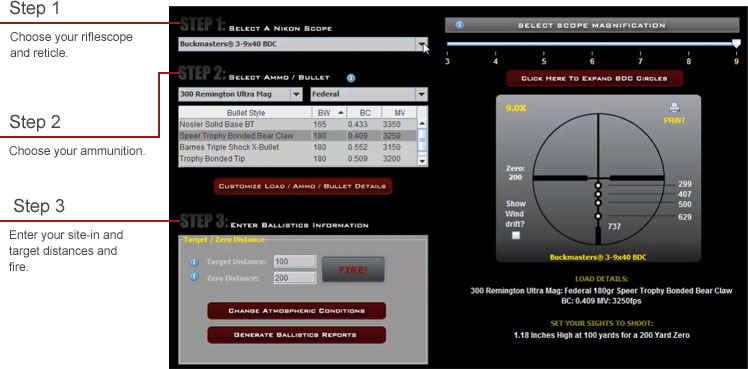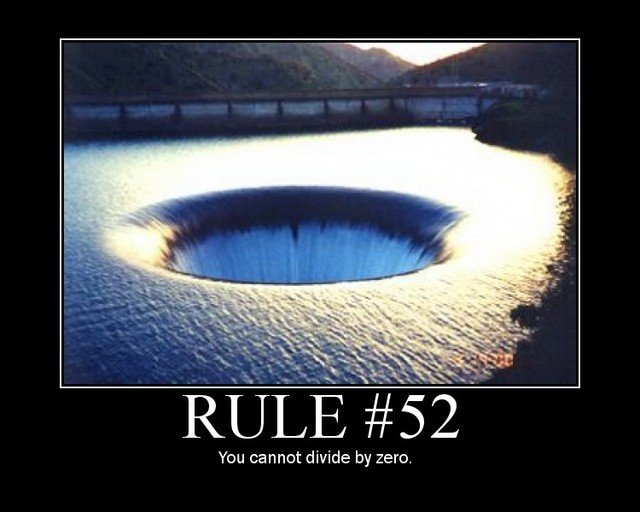-
If you enjoy the forum please consider supporting it by signing up for a NES Membership The benefits pay for the membership many times over.
You are using an out of date browser. It may not display this or other websites correctly.
You should upgrade or use an alternative browser.
You should upgrade or use an alternative browser.
scope gurus - Nikon BDC question
- Thread starter pupchow
- Start date
Okay, I'm getting how the slope won't effect the BDC. And I can see how the mount's slope would be beneficial if the zero were much further out, or if the load being used had a significant drop, exceeding the scope's internal adjustment. But if the riflescope is zeroed @ 100 yards, what benefit would the 20 MOA slope have with a .223?
But if the riflescope is zeroed @ 100 yards, what benefit would the 20 MOA slope have with a .223?
no benefit
chinalfr
NES Member
Okay, I'm getting how the slope won't effect the BDC. And I can see how the mount's slope would be beneficial if the zero were much further out, or if the load being used had a significant drop, exceeding the scope's internal adjustment. But if the riflescope is zeroed @ 100 yards, what benefit would the 20 MOA slope have with a .223?
20 is better than 0. How cool is that. Chicks dig it too. /joke
The extra 20 MOA will benefit you if you can't get your scope zeroed (run out of adjustment).
If you're strictly going to use the BDC to determine bullet impact at long range, then you'll see no benefit. If you plan to dial the knobs to do long range, then the 20 MOA rail will allow you to dial further before running out of vertical adjustment.
For example, if your scope has 100 MOA of total vertical adjustment, you have 50 MOA of up and 50 MOA of down available when your reticle is centered. If your zero at whatever range is dead-center (not likely but just for this example let's assume it is), and you add a 20 MOA rail and re-zero, now you have 70 MOA of up adjustment and 30 MOA of down. So now you can take shots and accurately dial where you may need up to 70 MOA of come-up, rather than the 50 MOA you had.
This works up to a point. If you have a scope with only 30 MOA of adjustment (probably some piece of junk), then with a 20 MOA rail you probably won't be able to zero it at close range.
For example, if your scope has 100 MOA of total vertical adjustment, you have 50 MOA of up and 50 MOA of down available when your reticle is centered. If your zero at whatever range is dead-center (not likely but just for this example let's assume it is), and you add a 20 MOA rail and re-zero, now you have 70 MOA of up adjustment and 30 MOA of down. So now you can take shots and accurately dial where you may need up to 70 MOA of come-up, rather than the 50 MOA you had.
This works up to a point. If you have a scope with only 30 MOA of adjustment (probably some piece of junk), then with a 20 MOA rail you probably won't be able to zero it at close range.
Yes, the .223 55gr BDC, with 20 MOA mount, seems like a bad combo. Target distances will be within 300 yards. Since the point of the BDC is holdover, rather than turret twisting, one would negate the other? And a 100 yd zero, combined with the relatively flat trajectory up until then, would mean using a lot of adjustment to offset the slope of the mount. This is a friend's 4-16 Nikon, which has only 40 MOA of internal adjustment. I'm going to suggest he find a 0 slope mount for it.
chinalfr
NES Member
Yes, the .223 55gr BDC, with 20 MOA mount, seems like a bad combo. Target distances will be within 300 yards. Since the point of the BDC is holdover, rather than turret twisting, one would negate the other? And a 100 yd zero, combined with the relatively flat trajectory up until then, would mean using a lot of adjustment to offset the slope of the mount. This is a friend's 4-16 Nikon, which has only 40 MOA of internal adjustment. I'm going to suggest he find a 0 slope mount for it.
Now, you lost me there. Your friend has a Nikon M223 4-16x42 BDC 600 scope, right? (I'm comparing your given info with the scope spec). Both Nikon 0 MOA or 20 MOA mount will fit his need for shooting on a 300 yard range. Since the ammo used might not be .223 55gr polymer tip bullet, you can use the Nikon Spot On software to get your BDC info. He will need to zero the scope @ 100 yards. Then use the BDC to compensate up to xxx yards.
This scope is not limited to .223/556. With Spot On software, you choose your ammo (caliber) and scope info, it will calculate the BDC info for you (assuming no other factor is applied)
Nikon Spot On™ Ballistic Match Technology Program

Last edited:
With the bullet drop @ 100 yards being less than 2", and the scope on a 20 MOA slope, wouldn't the scope require quite a few clicks of elevation to zero? I've got a 4-16x Nikoplex, mounted on the 0 slope M223 mount, and it didn't take much tweaking to zero @ 100 yards with the 55gr loads. Not that the 20 MOA mount can't work in this situation, but it doesn't seem to be the optimum setup if the scope's elevation has to be cranked so far off center to zero?
chinalfr
NES Member
With the bullet drop @ 100 yards being less than 2", and the scope on a 20 MOA slope, wouldn't the scope require quite a few clicks of elevation to zero? I've got a 4-16x Nikoplex, mounted on the 0 slope M223 mount, and it didn't take much tweaking to zero @ 100 yards with the 55gr loads. Not that the 20 MOA mount can't work in this situation, but it doesn't seem to be the optimum setup if the scope's elevation has to be cranked so far off center to zero?
Did you read post #8?
For example, if your scope has 40 MOA of total vertical adjustment, you have 20 MOA of up and 20 MOA of down available when your reticle is centered. If your zero at whatever range is dead-center (not likely but just for this example let's assume it is), and you add a 20 MOA rail and re-zero, now you have 40 MOA of up adjustment and 0 MOA of down. So now you can take shots and accurately dial where you may need up to 40 MOA of come-up, rather than the 20 MOA you had.
"and you add a 20 MOA rail and re-zero, now you have 40 MOA of up adjustment and 0 MOA of down."
I've read that having a scope's internal adjuster near one extreme isn't desirable, and can affect the adjustment range of the other? It certainly seems the 20 MOA slope mount is better left for a setup with a heavier punch and longer reach. Maybe something in the 300-600 meter range?
I've read that having a scope's internal adjuster near one extreme isn't desirable, and can affect the adjustment range of the other? It certainly seems the 20 MOA slope mount is better left for a setup with a heavier punch and longer reach. Maybe something in the 300-600 meter range?
Chris
NES Member
- Joined
- May 24, 2005
- Messages
- 13,382
- Likes
- 8,210
Many of you are missing the point.
For a 55 grain round, the BDC will get you close without any adjustment. Nice for hunting when you can range the target quickly. You can use it for other rounds by using Nikon's SpotOn to produce a range chart for any load. It's just not quite as easy remembering odd values for all the hash marks.
But, when you are shooting other rounds, you can use the adjustable turrets to dial in your impact point either by taking notes at different ranges like we used to do, or use the Nikon SpotOn software to predict your proper setting.
So long as the extra marks on the cross hair don't bother you, you can have both worlds. Some people find the marks too busy.
The 20 MOA mount will allow you to dial in the ballistics of heavier bullets out beyond 600 yards, something not possible with a flat mount due to Nikon's more limited adjustments caused by having a wider zoom range.
Hope this helps.
Telepathically uploaded via Google implants.
For a 55 grain round, the BDC will get you close without any adjustment. Nice for hunting when you can range the target quickly. You can use it for other rounds by using Nikon's SpotOn to produce a range chart for any load. It's just not quite as easy remembering odd values for all the hash marks.
But, when you are shooting other rounds, you can use the adjustable turrets to dial in your impact point either by taking notes at different ranges like we used to do, or use the Nikon SpotOn software to predict your proper setting.
So long as the extra marks on the cross hair don't bother you, you can have both worlds. Some people find the marks too busy.
The 20 MOA mount will allow you to dial in the ballistics of heavier bullets out beyond 600 yards, something not possible with a flat mount due to Nikon's more limited adjustments caused by having a wider zoom range.
Hope this helps.
Telepathically uploaded via Google implants.
chinalfr
NES Member
i have a p223 scope but my p223 scope mounts are on back order anyone have any ideas with a suitable replacement?
Any 1" scope ring will fit.
Sent it from iPhone 5 LTE
chinalfr
NES Member
even if i have a mbuis on my m&p sport?
If you have problem with that, then wait for your Nikon mount. The Nikon mount is super cool and looks tactical.
Sent it from iPhone 5 LTE
BTW, it seems Nikon has updated their one-piece AR scope mounts. It looks like they simply flared the rings at the clamping screw holes
Nikon M-223 Mount FREE S&H 833, 834. Nikon Riflescope Mounts, Rings & Bases.
Nikon M-223 Mount FREE S&H 833, 834. Nikon Riflescope Mounts, Rings & Bases.
Wow, Some great information being passed along guys. It's always nice reading Nikon threads where guy's are truly trying to help one another. Chin and others are right on. Pup, Nikon's redesigned M-223 AR Mounts do have a nicer look and less sharp edges. They can be purchased in XR version that gives the shooter 20 MOA. For the most part, unless you are foing to shoot past 500 yards this will not be needed. On the other hand, I like it just because on the rare occasion I get that opportunity I don't want to not be ready. Seeing the Spot On cut and paste show's you how flexible this ballistic program can be for every shooters specific needs. Change you ammo, go to Spot On, want to shoot at 50 yards but have a 200 yard zero, go to shot on to see where your impact needs to be at 50 for the 200 yard zero. If I can be of any help guy's, please drop me a note and thanks for all the pro-Nikon support! AR Mount Promo ends on 3/31 by the way.
http://i1216.photobucket.com/albums/dd363/bman940/3-1.jpg
http://i1216.photobucket.com/albums/dd363/bman940/3-1.jpg
Share:

